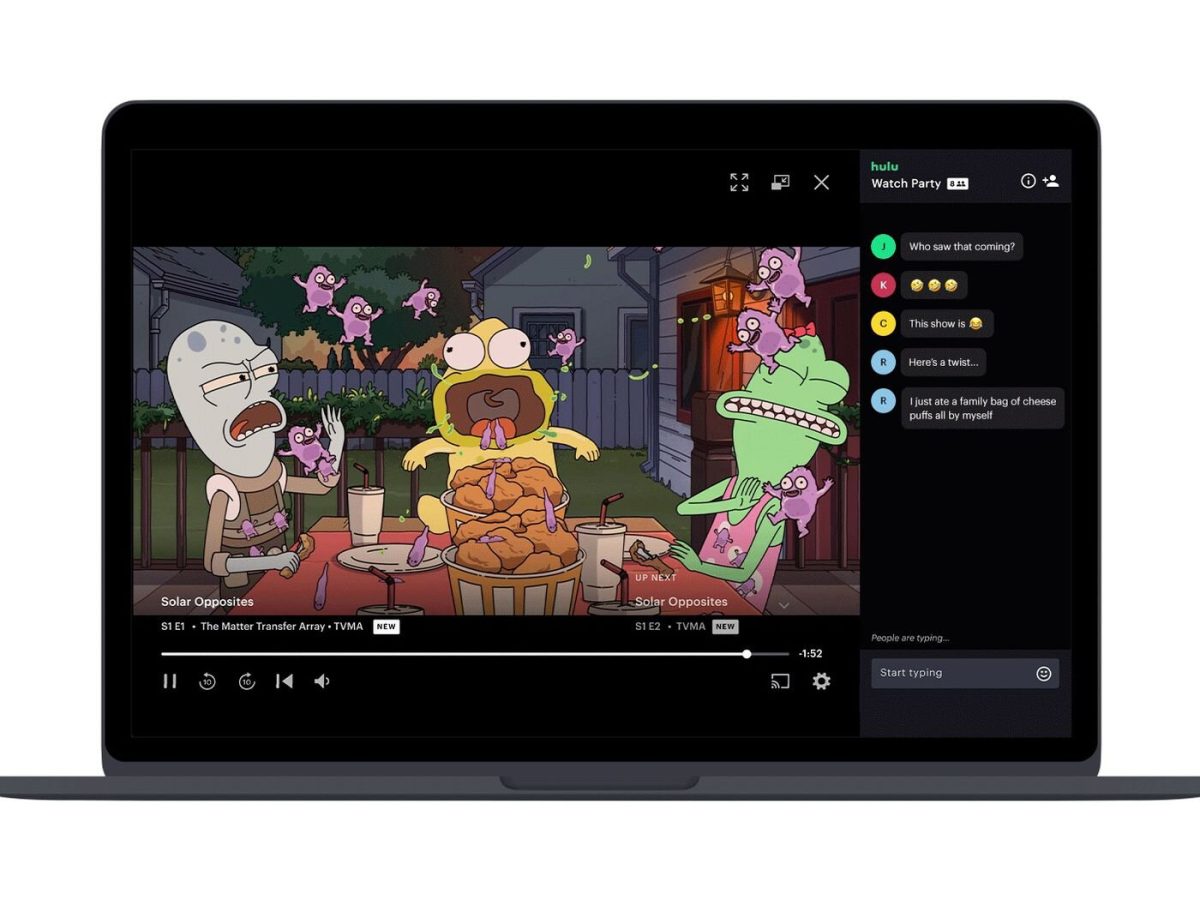Photo courtesy of The Verge
The start of the COVID-19 pandemic in March 2020 catapulted group streaming services into the public sphere. Where people once flocked to movie theaters, now viewers must resort to watching new films in the comfort of their own homes while snacking on homemade popcorn. Unfortunately, with social distancing guidelines in place, this also means the in-person experience is limited to family members.
Teleparty, Hulu Watch Party, Prime Video Watch Party and Scener are just a few of the platforms that allow viewers to watch a movie or show remotely with a larger group of people from other households. Each platform has benefits and disadvantages. Which one is best?
Teleparty itself is relatively easy to use. After choosing a show, one viewer can start the party and send a link to their friends. Once those friends use the link to access the show, the group can chat together on the right-hand side of the screen as the automatically synced video plays.
Chat-wise, Teleparty’s interface is the most attractive. Viewers can customize their own avatar from about 20 different options and input their own nickname. The avatars’ different colors help differentiate one friend from another at a quick glance, and the font is easy to read.
One of the best, underappreciated things about Teleparty is that if one person pauses the video, the video immediately pauses for everyone, which ensures that everyone is watching the same part of the video at once. On the other hand, disconnection issues happen occasionally: Messages appear to send twice, people get booted from the session or Teleparty claims someone left when they are still there.
Hulu Watch Party operates similarly to Teleparty, but with no extension required and the watchable content remains exclusive to Hulu. To start a party, viewers go to the Hulu website, click on the desired film or episode and send the link to their friends.
Unlike Teleparty, Hulu Watch Party allows the party creator to control when the episode starts, which is helpful if multiple people are trying to join. Despite that benefit, a major downside of the platform is that the group will have to send a new link for every episode watched, which is an annoyance when binge-watching television shows.
The most inconvenient part of Hulu Watch Party is the advertisements, which are interspersed throughout the video much like they would be during an on-air broadcast. Not only that, but each person gets ads at different times and at different lengths, so the other people are forced to wait for them to finish before resuming the video. The “catch up” option does a poor job of getting everyone back to the same place, since each device pauses and plays separately from everyone else. Overall, the synchronization across devices suffers.
Prime Video Watch Party closely resembles the two previously discussed platforms. All viewers must have an Amazon Prime account and selections include purchasable or rentable content, as well as Prime videos. Guests access the party by clicking a link. Whoever creates the party controls the video, moderates the chat and ends the party.
Scener operates similarly to Teleparty, except that it has an added video and audio function, which allows groups to watch movies and shows together while seeing each other’s reactions in real time. Netflix, Disney +, Hulu, Amazon Prime, HBO Max and YouTube are just a few of the streaming platforms that work with Scener. The video function separates Scener from the other three services mentioned here. Each person can control whether they have their camera and audio on, while also controlling the volume of each individual friend.
While none of the platforms are perfect, it is nice to know that the group theater experience can continue in some form despite the pandemic. Ultimately, the most important part is the time spent with friends and family, not what avatar someone has or how many advertisements the group must watch to do so.







